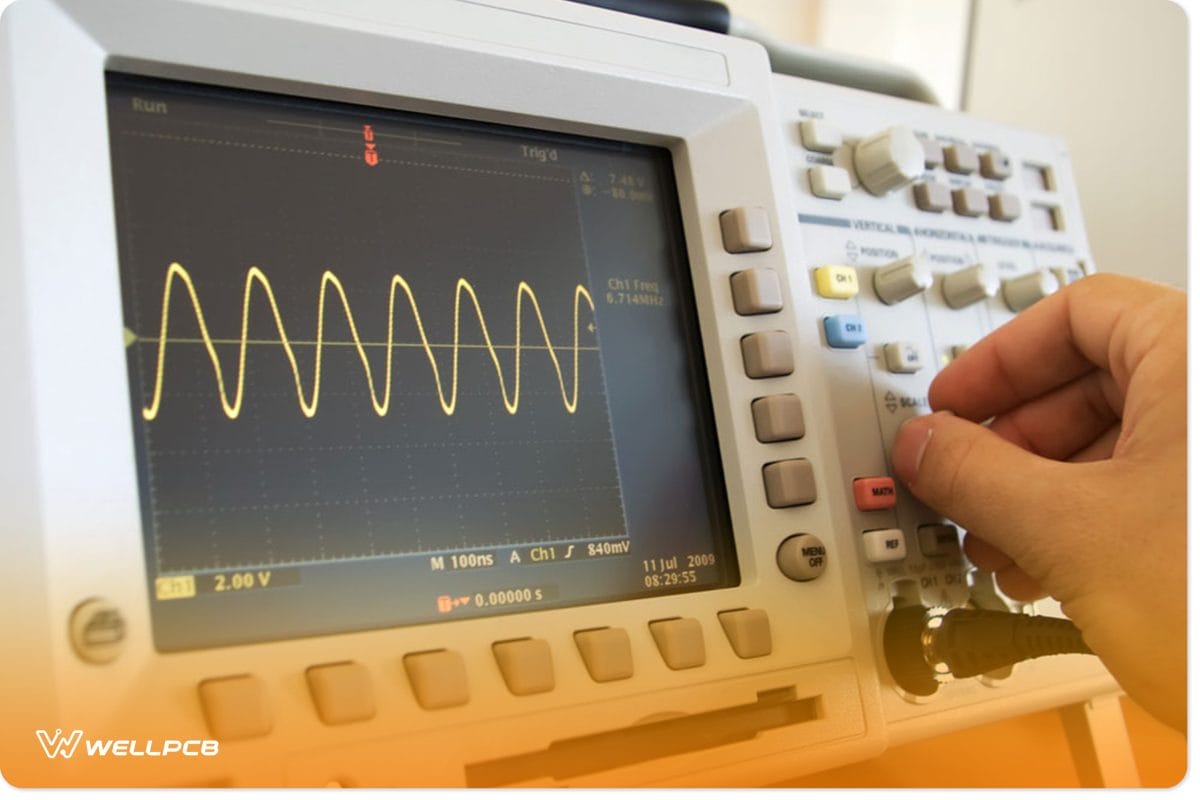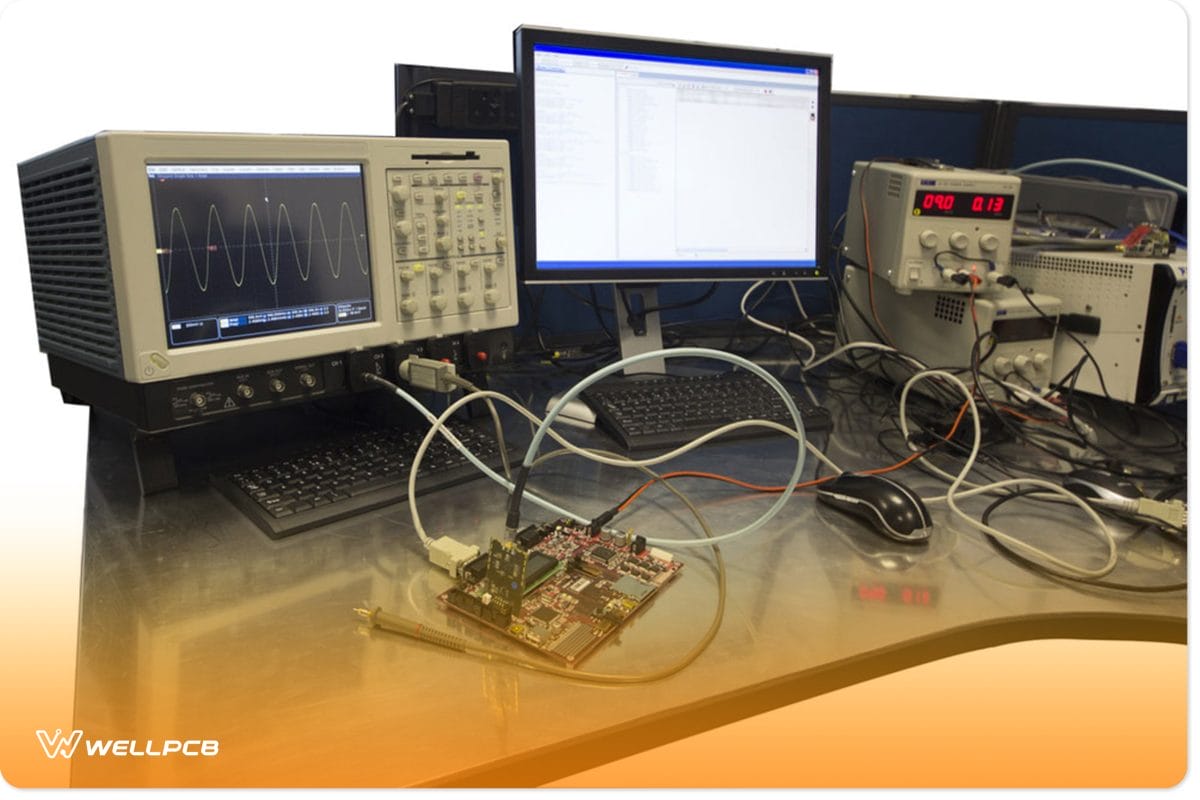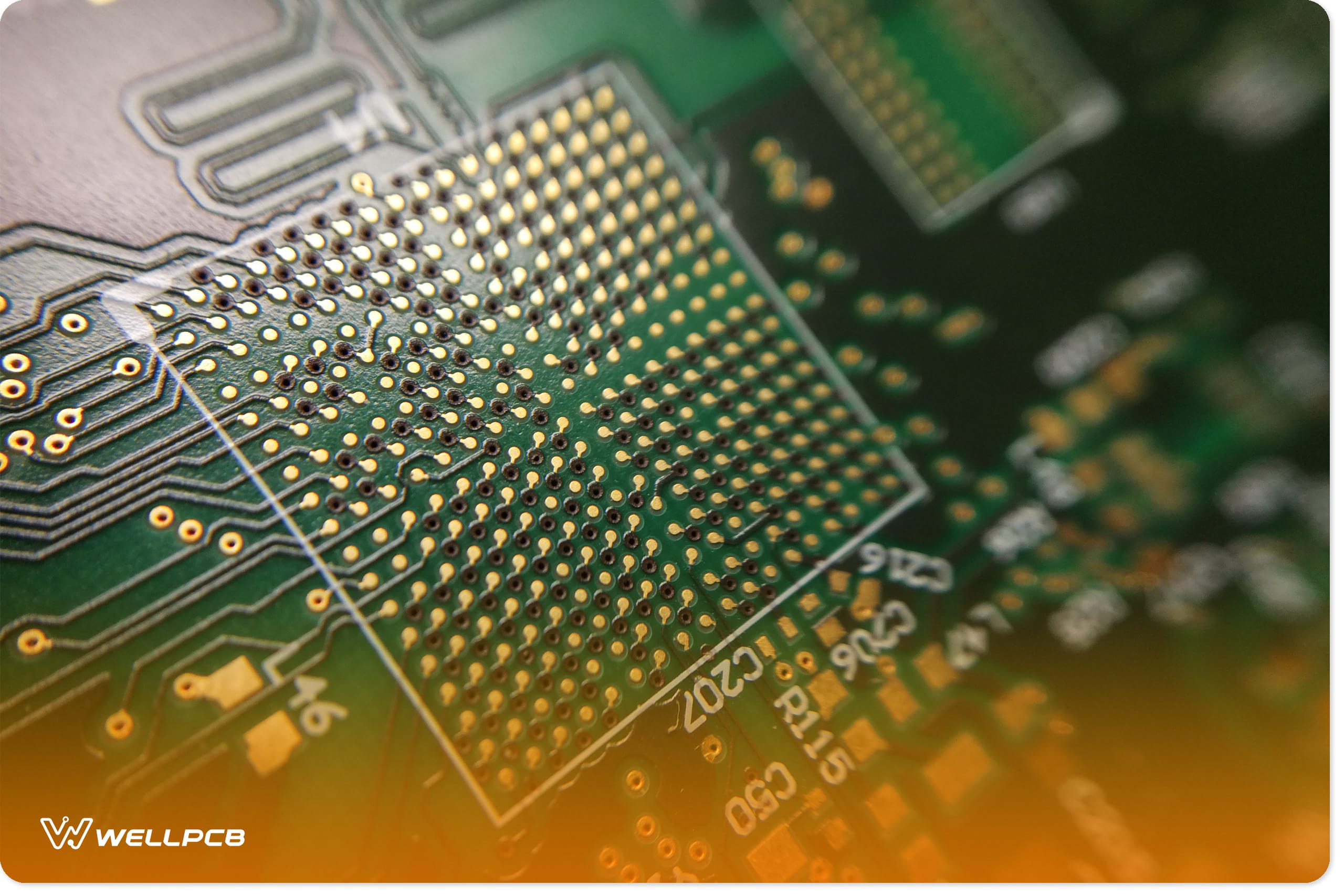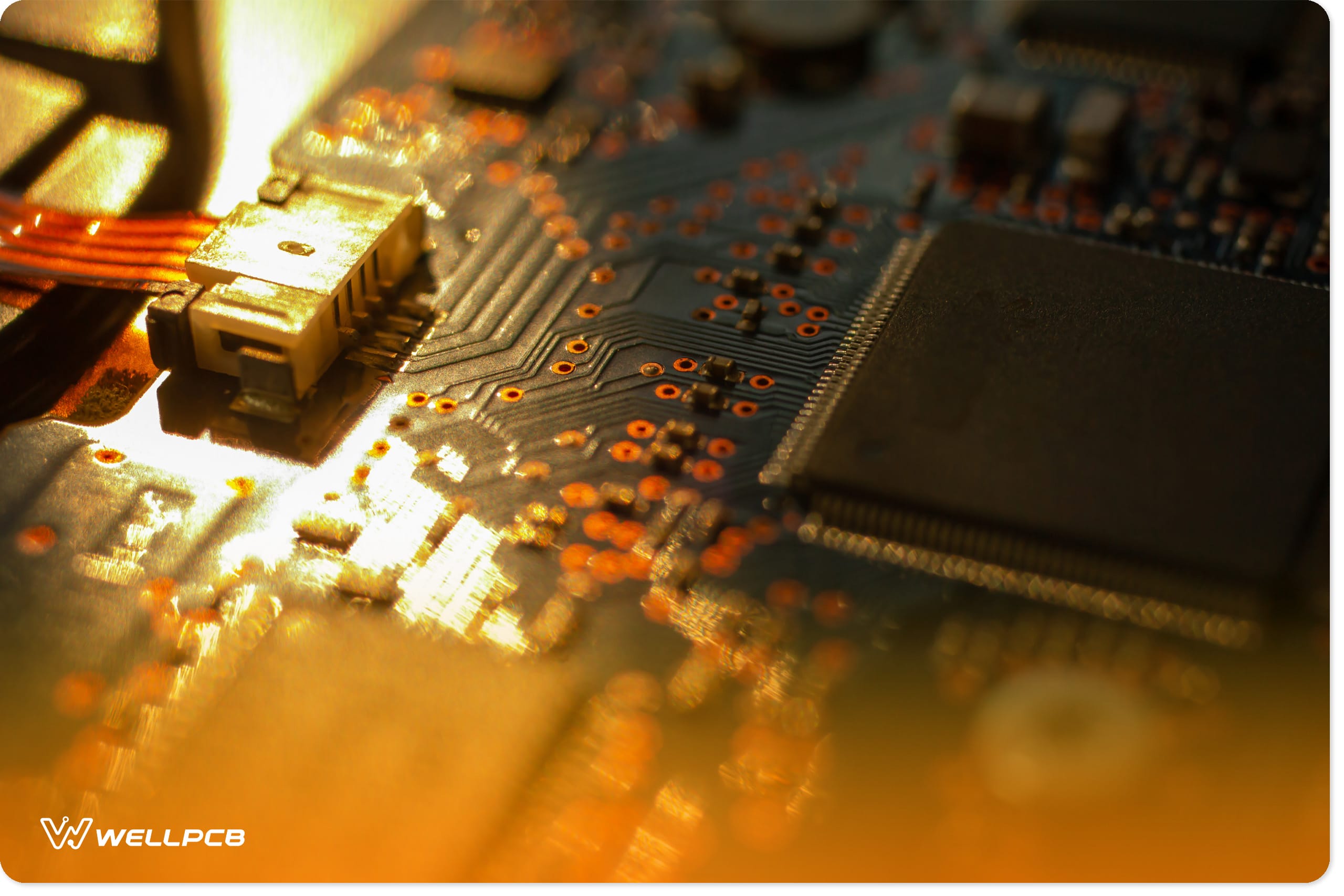Contents
What is an Oscilloscope?

A hand adjusting an oscilloscope
The oscilloscope goes by many names. You may refer to it as an oscillograph, o-scope, CRO (cathode-ray oscilloscope), DSO (digital storage oscilloscope), or simply a scope. It’s a piece of equipment that uses a probe to measure the varying signal voltage between two points of an electronic device or electrical circuit.
When measuring voltage, a multimeter takes a circuit reading from a single point in time. On the other hand, oscilloscopes allow you to measure a circuit’s voltage over time. Essentially, it will take many thousands of readings and plot them on your screen. This will allow you to compare any voltage spikes or drops from transient events easily.
There are two main types of oscilloscopes: analog oscilloscopes (or analog oscilloscopes) and digital oscilloscopes. They virtually work the same, but as you’ll see, digital oscilloscopes come with additional features that their analog counterparts don’t have.
Analog Oscilloscopes
When manufacturers introduced analog oscilloscopes, they utilized a CRT with horizontal deflection plates to display waveforms.
Voltages on the horizontal plates on the tube modified the position of the stream. When the electron stream hit the phosphor coating on the screen, the landing area glowed. Consequently, this displayed a spot of light that would ultimately become a perceivable wavelength.
There were dual-beam oscilloscopes that you could use to compare two different signals. They would simultaneously emit and display two electron beams on a single flat screen.
Basic analog oscilloscopes did not come with a storage feature. However, you could purchase an analog storage scope to store an input wavelength image. Nevertheless, these analog storage scopes were costly and quite rudimentary according to modern standards.
Originally, analog scopes were commonly big and cumbersome. However, thanks to digital technology, future scopes have become compact enough for field service applications.
Digital Oscilloscopes
Solid-state screens took over from the large and cumbersome CRTs. Accordingly, this made scopes much smaller and not nearly as deep. Additionally, this also afforded them more display functions. Today, digital oscilloscopes are the most common types of scopes.
Furthermore, the advent of digital scopes allowed for extra features such as standard storage, improved display manipulation, better triggering, etc.
Types of Digital Oscilloscopes
As manufacturers and companies released the first digital scopes, they introduced them under digital phosphor oscilloscope (DPO) and digital storage oscilloscope (DSO). This is because the first few digital oscilloscopes used phosphor screens. A modern-day digital oscilloscope uses an LED or LCD screen.
In the past, screen size and resolution limited analog oscilloscopes. Inversely, modern digital oscilloscopes do not have this problem.
Mixed-Signal and Mixed-Domain Oscilloscopes (MSO and MDO)
The new capabilities that digital scopes provide went well beyond what many could envisage in the analog days. They incorporated capabilities such as logic analysis channels beyond the two or more analog scope channels normally available. For instance, mixed-signal oscilloscopes (MSO) become available. Other capabilities like a function generator output and a digital multimeter were also possible.
Nearly all modern oscilloscopes have standard MSO models. Alternatively, they may offer multiple digital channels as an option. Furthermore, many digital oscilloscopes include signal processing to make measurements in the frequency domain, i.e., spectrum analysis. This allows for testing circuits that may require a mixture of spectrum analysis and normal scope measurements.
A true mixed-domain oscilloscope has a dedicated RF connector that you can only use for frequency-domain measurements. Interestingly, it normally has a higher performance spectrum analysis capability.
Digital Sampling Oscilloscopes
Another form of an oscilloscope is the digital sampling scope. It’s a very specialized form of scope that people use for a limited number of niche applications. For instance, it can look at aspects like jitter on signals well into the tens of gigahertz regions. As such, we do not use these scopes for average oscilloscope applications.
As a result, they have a limited use case. Scopes also come in a variety of formats. They can come in standard benchcases for use in a laboratory. In contrast, others are more suited to field service applications.
USB and PC-Based Oscilloscopes
A PC-based oscilloscope can either come as a standalone oscilloscope or as an external oscilloscope. External PC-based oscilloscopes require a connection to your PC to work. Furthermore, they can use the computer’s display, power supply, and processor. Often, you can link them through a USB interface.
However, some external oscilloscopes can use computer bus systems such as the PXI system. Of course, you’ll need to install oscilloscope software and drivers on your computer for it to interface correctly.
On the other hand, internal PC-based standalone oscilloscopes come with internal computer parts. They have internal microprocessors that grant them extra features such as instrument control, automatic measurement, and display management. Additionally, they allow for more complex processing of digitized signals. This exceeds the capabilities of analog versions with direct-view storage CRTs.
There’s an enormous variety of different types and models of oscilloscopes. By knowing their characteristics and looking at their specification sheets, you can look at their performance, form factor, and overall capabilities.
Analog vs. Digital Oscilloscope: Key Differences Between Analog and Digital Oscilloscopes
Differences in Operation

Electronic engineering workbench with an oscilloscope
There is a huge misunderstanding among the novice electronics community. Many people assume that only analog scopes use CRT displays. This is untrue. Digital oscilloscopes such as the Tektronix 2230 digital storage oscilloscope use a CRT display.
If you compared an old analog scope like the Tektronix 2213 to the Tektronix 2230 DSO, you’d notice how the latter has more panel controls. Thus, there is intrinsically more complexity to how a digital storage scope operates.
A digital scope can do everything that an analog scope can. However, when you start to zoom out on an analog scope, especially if it’s a lower frequency, the output image begins to flicker. This is because of how the CRT screen displays waveforms.
The digital storage oscilloscope fixes this by providing you with a more stable image. Thus, instead of displaying the varying voltage, the DSO will sample the waveforms at varying points, store them and display them. This gives it a more stable display and makes it easier for you to view the entire waveform.
The digital oscilloscope achieves this through its analog-to-digital converter (ADC). It takes the measured voltages as analog signals and translates them into digital signals.
The analog scope isn’t capable of the same persistence that a digital scope is. Furthermore, you can tune the effective persistence on a digital scope, allowing it to pick up more noise. The display calibration allows you to see a more accurate measurement and better graph quality. Furthermore, the use of LCD technology makes digital systems lighter and more portable.
Differences in Specifications
Another way to understand some of the differences between oscilloscopes is by observing their specifications. In this section, we’ll cover the specifications:
Bandwidth (BW):
This is the banner specification for an oscilloscope. It describes how high a frequency the front-end of the oscilloscope can handle and how fast of a rise-time it can capture.
Thus, the frequency of the signal and the rise time of that signal are inherently related. To calculate the fastest rise time that your scope can see, divide 0.35 by the specified bandwidth of the scope. So the formula looks like this: fastest capturable time = 0.35 / bandwidth.
Both analog and digital oscilloscopes have bandwidth specifications. However, modern digital scopes surpass the bandwidth capabilities of older scopes by far.
Sample/Sampling Rate:
This specification is unique to digital scopes. It tells you at how many points per second your oscilloscope is acquiring data. Essentially, the input signal routes through the analog front end (where the bandwidth comes from), and then the digitizer samples the analog waveform.
While the sample rate is related to the bandwidth, it does not affect it. All it does is take data from the analog front end. Nevertheless, the bandwidth describes the analog portion of the oscilloscope, while the sample rate describes the digital part. From this, we can understand why the sample rate is a spec that is exclusive to digital oscilloscopes.
Memory Depth/Size:
Sample rate and memory depth are attributes that relate closely to each other in an oscilloscope. The memory depth describes how much waveform data the oscilloscope can capture. The faster the sample rate, the shorter the captured wave. Thus, waveforms with faster sample rates take up more memory. Furthermore, the more memory you can utilize, the more time you can store.
Memory depth is the third most important property of a digital oscilloscope. Again, it’s a specification that is unique to digital storage oscilloscopes. Analog oscilloscopes do not capture or record waveforms. As such, they do not have memory depth properties.
Resolution (ADC Bits):
Modern oscilloscopes come with 8,10, and 12 ADC bits. The analog-to-digital converter takes an analog signal, converts it, and quantizes it into digital information. Thus, an 8-bit ADC is capable of 256 quantization levels (2^8 = 256). This is the vertical resolution of the ADC.
The higher the resolution, the clearer the waveform representation will be. Furthermore, the ADC bits will dictate the input range. For instance, scopes with higher resolutions will be more suited to analyzing tiny signals. This is another unique specification that analog oscilloscopes do not have.
Trigger:
- Each digital scope comes with a knob that allows you to alter the trigger level on the scope. The trigger essentially tells the scope when to take a snapshot of the waveform.
Your standard DSO comes with many different trigger modes, which tell how to react when it encounters a trigger event. For instance, the edge trigger mode tells the oscilloscope to capture a snapshot when the signal touches the edge of the grid on display. This gives you a versatile way of measuring the waveform.
Again, because analog scopes do not capture and store data, triggers are mostly unique to digital storage oscilloscopes.
Benefits of Analog Oscilloscopes
There are many advantages to using digital oscilloscopes over analog ones. But what are the benefits of using old analog oscilloscopes?
Easier to Use:
Digital scopes tend to be more elaborate oscilloscopes. Inversely, analog oscilloscopes may be easier to use because they have minimal controls and less confusing displays. Thus, you can use them to learn the basics of voltage testing. Often, fewer features do equate to more simplicity. You don’t have to spend as much time configuring analog scopes.
Less Expensive:
Analog oscilloscopes are less expensive than digital types. This is because they’re older and have fewer features, and since you can find many secondhand scopes of this type, they’re cheaper.
Better For Analog Readings:
Analog readings often appear better on analog CRT screens. They are clearer and, in some instances, may appear less noisy.
Availability:
Again, because they’re older, there are many old secondhand models that you can purchase. Additionally, they’re less in demand. Thus, most reputable electronics and equipment stores tend to be replete with stock.
There are many advantages to using digital oscilloscopes over analog ones. But what are the benefits of using old analog oscilloscopes?
- Easier to Use: Digital scopes tend to be more elaborate oscilloscopes. Inversely, analog oscilloscopes may be easier to use because they have minimal controls and less confusing displays. Thus, you can use them to learn the basics of voltage testing. Often, fewer features do equate to more simplicity. You don’t have to spend as much time configuring analog scopes.
- Less Expensive: Analog oscilloscopes are less expensive than digital types. This is because they’re older and have fewer features, and since you can find many secondhand scopes of this type, they’re cheaper.
- Better For Analog Readings: Analog readings often appear better on analog CRT screens. They are clearer and, in some instances, may appear less noisy.
Availability: Again, because they’re older, there are many old secondhand models that you can purchase. Additionally, they’re less in demand. Thus, most reputable electronics and equipment stores tend to be replete with stock.
Conclusion
For most simple testing in electronic engineering, analog oscilloscopes perform as well as digital oscilloscopes. If you’re a beginner or hobbyist, you may benefit more from purchasing an analog scope instead of a digital scope. However, when purchasing a scope, you must be clear on your goals and if the oscilloscope’s features align with them.
For instance, you’ll need to analyze the oscilloscope design, digital or analog bandwidth, rise time, sample rate, channel density, record length, waveform capture rate, connectivity, and expandability. For digital oscilloscopes, you’ll need to worry about memory per channel and memory depth. Once you understand these simple specifications, you’ll be able to discern which oscilloscope is best for you. Now, when people ask: “analog vs. digital oscilloscope; which one is better?” you’ll be able to provide them with a clear answer. Nevertheless, we hope that you’ve found this guide to be helpful. As always, thank you for reading.





